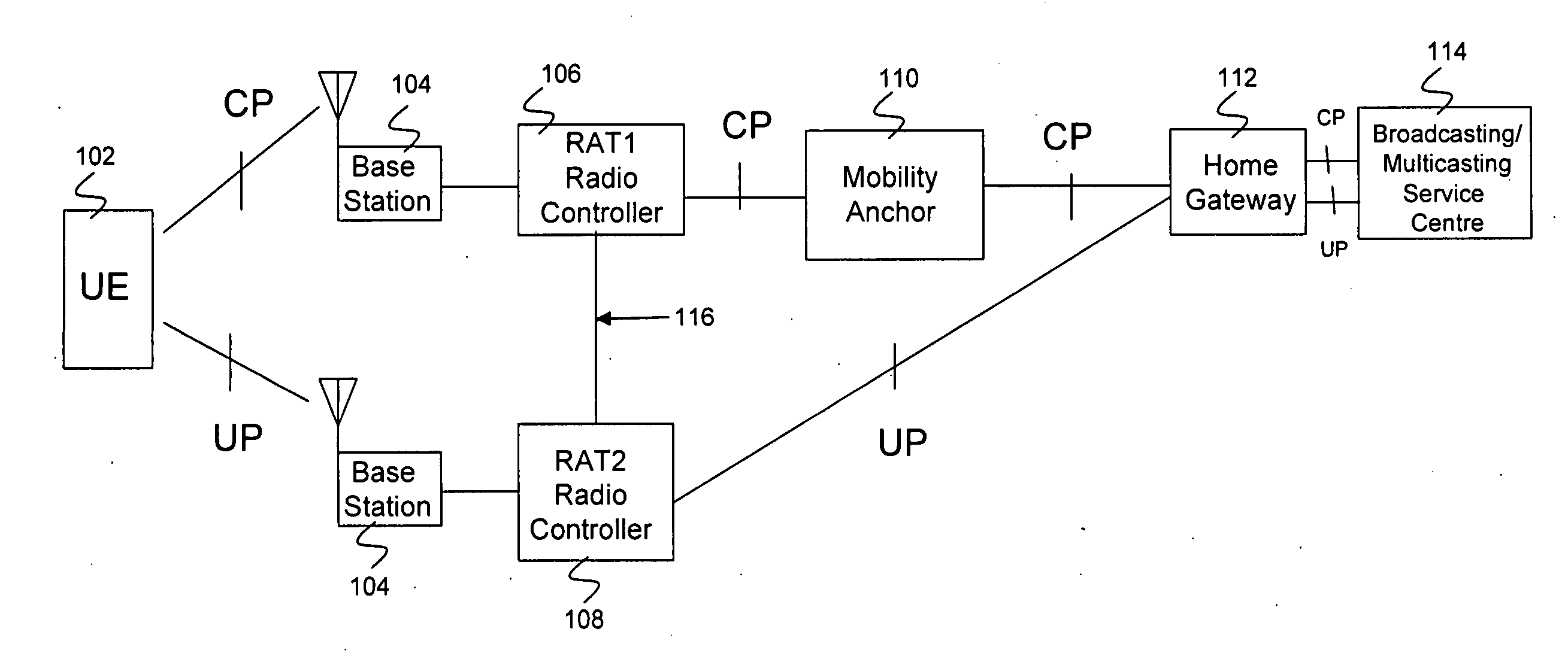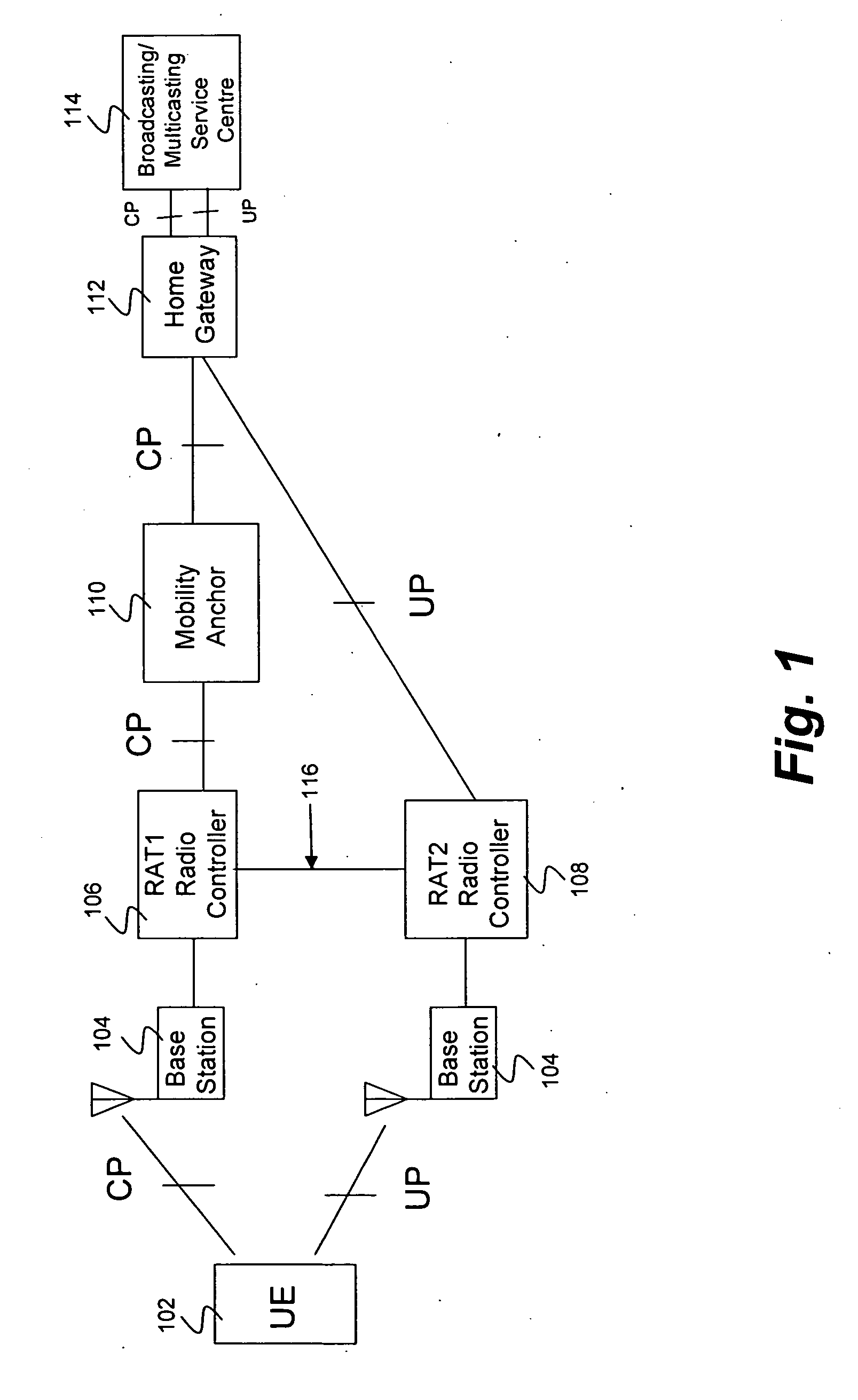Direct user plane tunnel delivery of broadcast and multicast traffic
- Summary
- Abstract
- Description
- Claims
- Application Information
AI Technical Summary
Benefits of technology
Problems solved by technology
Method used
Image
Examples
Embodiment Construction
[0016]FIG. 1 illustrates an exemplary embodiment of the logical architecture of a network with a point-to-multipoint service center (e.g., an MBMS service center). A first network is defined by RAT1, and a second network is defined by RAT2. Each RAT is implemented by a radio controller (e.g., RAT1 radio controller 106 and RAT2 radio controller 108). The radio controller (RC) is the control element in the radio access network (RAN) responsible for controlling the base stations 104 of a specific RAT. The RC carries out radio resource and mobility management functions. This is the point in the network where encryption may be done before user data is sent to and from the mobile UE 102.
[0017]The UE 102 communicates with RAT1 and RAT2 via base stations 104 coupled to the RAT1 RC 106 and RAT2 RC 108. The UE wireless terminal 102 includes a first receiver, a second receiver, and a transmitter. The UE 102 may receive signals simultaneously from RAT1 and from RAT2. In other words, the first r...
PUM
 Login to View More
Login to View More Abstract
Description
Claims
Application Information
 Login to View More
Login to View More - R&D
- Intellectual Property
- Life Sciences
- Materials
- Tech Scout
- Unparalleled Data Quality
- Higher Quality Content
- 60% Fewer Hallucinations
Browse by: Latest US Patents, China's latest patents, Technical Efficacy Thesaurus, Application Domain, Technology Topic, Popular Technical Reports.
© 2025 PatSnap. All rights reserved.Legal|Privacy policy|Modern Slavery Act Transparency Statement|Sitemap|About US| Contact US: help@patsnap.com



